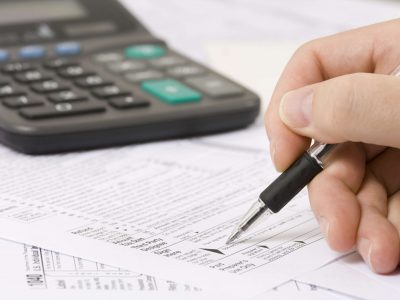Content

If you use your item of listed property 30% of the time to manage your investments and 60% of the time in your consumer research business, it is used predominantly for qualified business use. Your combined business/investment use for determining your depreciation deduction is 90%. For tax purposes, businesses must use a depreciation method prescribed by the IRS.
- John and James each include $40,000 (each partner’s entire share) of partnership taxable income in computing their business income limit for the 2022 tax year.
- It is calculated by simply dividing the cost of an asset, less its salvage value, by the useful life of the asset.
- The units-of-production depreciation method depreciates assets based on the total number of hours used or the total number of units to be produced by using the asset, over its useful life.
- Some systems permit the full deduction of the cost, at least in part, in the year the assets are acquired.
- OMB’s depreciation estimates are intended to be illustrative, for the
purpose of estimating rough trends in the stock of federally financed capital. - Most business owners prefer to expense only a portion of the cost, which can boost net income.
The use of depreciation is intended to spread expense recognition over the period of time when a business expects to earn revenue from the use of an asset. In the accounting context, businesses want their profits to seem high or low for a variety of reasons. Large purchases on equipment like machinery can vastly change the profitability in a given year. Businesses without restraint could report an asset all in one year or over many more years than the asset will be used based on what their interests are. So, national and international standards govern how items must be depreciated over time such as generally accepted accounting principles (GAAP).
Straight-Line Depreciation Method
When using a declining balance method, you apply the same How to set up as an independent contractor in the Czech Republic rate each year to the adjusted basis of your property. You must use the applicable convention for the first tax year and you must switch to the straight line method beginning in the first year for which it will give an equal or greater deduction. The unadjusted depreciable basis of a GAA is the total of the unadjusted depreciable bases of all the property in the GAA.
The https://kelleysbookkeeping.com/certified-bookkeeper-certifications-licenses-cpb/ rate is 40% and Tara applies the half-year convention. On December 2, 2019, you placed in service an item of 5-year property costing $10,000. You did not claim a section 179 deduction and the property does not qualify for a special depreciation allowance. You used the mid-quarter convention because this was the only item of business property you placed in service in 2019 and it was placed in service during the last 3 months of your tax year.
Methods for depreciation
Go to IRS.gov to see your options for preparing and filing your return online or in your local community, if you qualify, which include the following. The inclusion amount is subject to a special rule if all the following apply. You can revoke an election to use a GAA only in the following situations. If there is a gain, the amount subject to recapture as ordinary income is limited to the result of the following.
What are 3 examples of depreciating assets?
Depreciable property includes machines, vehicles, office buildings, buildings you rent out for income (both residential and commercial property), and other equipment, including computers and other technology.
You can choose to use the income forecast method instead of the straight line method to depreciate the following depreciable intangibles. Computer software is generally a section 197 intangible and cannot be depreciated if you acquired it in connection with the acquisition of assets constituting a business or a substantial part of a business. You cannot use MACRS for property you placed in service before 1987 (except property you placed in service after July 31, 1986, if MACRS was elected). Property placed in service before 1987 must be depreciated under the methods discussed in Pub. On April 6, Sue Thorn bought a house to use as residential rental property.
Credits & Deductions
The determination of this August 1 date is explained in the example illustrating the half-year convention under Using the Applicable Convention in a Short Tax Year, earlier. Tara is allowed 5 months of depreciation for the short tax year that consists of 10 months. The corporation first multiplies the basis ($1,000) by 40% (the declining balance rate) to get the depreciation for a full tax year of $400. The corporation then multiplies $400 by 5/12 to get the short tax year depreciation of $167. You figure the SL depreciation rate by dividing 1 by 4.5, the number of years remaining in the recovery period. (Based on the half-year convention, you used only half a year of the recovery period in the first year.) You multiply the reduced adjusted basis ($800) by the result (22.22%).
You cannot use the MACRS percentage tables to determine depreciation for a short tax year. This section discusses the rules for determining the depreciation deduction for property you place in service or dispose of in a short tax year. It also discusses the rules for determining depreciation when you have a short tax year during the recovery period (other than the year the property is placed in service or disposed of). In January, you bought and placed in service a building for $100,000 that is nonresidential real property with a recovery period of 39 years. You use GDS, the SL method, and the mid-month convention to figure your depreciation.
